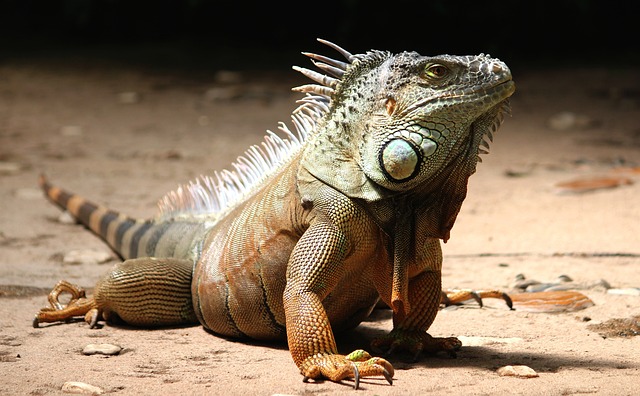Arboreal Tarantula vs Terrestrial Tarantula – Discover the Fascinating World of Different Types of Tarantulas!
Step into the captivating world of tarantulas and uncover the intriguing differences between arboreal and terrestrial species. Tarantulas are known for their fearsome appearance and reputation, but did you know that not all tarantulas inhabit the same environments? This article delves into the contrasting lifestyles of arboreal and terrestrial tarantulas, shedding light on their unique adaptations and behaviors.
Understanding the difference between arboreal and terrestrial tarantulas
Tarantulas, with their eight legs and intimidating appearance, have captured the fascination of both arachnid enthusiasts and curious onlookers. However, what many people don’t realize is that tarantulas can be divided into two distinct categories: arboreal and terrestrial. These two types of tarantulas have adapted to different habitats and possess unique characteristics that set them apart.
Arboreal tarantulas, as the name suggests, are the tree-dwellers of the tarantula kingdom. These elegant creatures have adapted to a life above ground, making their homes in the branches and foliage of trees. With their agile bodies and specialized appendages, arboreal tarantulas have evolved to navigate this lofty terrain with ease. Their vibrant colors and intricate patterns also make them a sight to behold.
Physical characteristics of arboreal tarantulas
Arboreal tarantulas possess a set of physical characteristics that enable them to thrive in their tree-dwelling lifestyle. One of their most notable features is their long, slender legs, which are perfectly suited for climbing and gripping onto branches. These agile creatures also have a lighter body build compared to their terrestrial counterparts, allowing them to maneuver through the intricate web of branches and leaves effortlessly.
In addition to their nimble legs, arboreal tarantulas have specialized appendages called scopulae, which are found on their feet. These scopulae are covered in tiny, hair-like structures that allow the tarantula to cling to surfaces and walk upside down on leaves and branches. This adaptation is crucial for their survival in the treetops, as it helps them avoid falling and potential predators.

Habitat and behavior of arboreal tarantulas
Arboreal tarantulas can be found in various habitats around the world, ranging from rainforests to deciduous forests. These tarantulas typically construct their homes in the hollows of trees or create silk-lined burrows within the tree bark. They rely on their silk to reinforce their nests and create intricate web structures that serve as both a means of capturing prey and a safety net.
Unlike their terrestrial counterparts, arboreal tarantulas spend a significant amount of their time off the ground. They have been observed actively hunting prey in the treetops, using their keen eyesight and agility to catch insects and small vertebrates. Some arboreal tarantulas even build elaborate silk “traps” between branches to ensnare unsuspecting prey.
Popular species of arboreal tarantulas
The world of arboreal tarantulas is filled with a diverse array of species, each possessing its own unique characteristics and beauty. One of the most well-known arboreal tarantulas is the Pink Toe Tarantula (Avicularia avicularia), named for its striking pink-tipped toes. This species is native to the rainforests of South America and is highly sought after by tarantula enthusiasts for its vibrant coloration.
Another popular arboreal tarantula is the Green Bottle Blue Tarantula (Chromatopelma cyaneopubescens), known for its stunning metallic blue legs and vibrant orange abdomen. This species is native to the dry forests of Northern Venezuela and is prized for its striking appearance and docile nature.
Must Read : Discover the Top 7 Tarantula Enclosures for Your Eight-Legged Friends
Physical characteristics of terrestrial tarantulas
Terrestrial tarantulas, in contrast to their arboreal counterparts, have adapted to a life on solid ground. They inhabit burrows and hide in the leaf litter or crevices of the earth. These robust tarantulas have powerful legs designed for navigating the terrain and capturing prey. With their earth-toned colors and impressive sizes, terrestrial tarantulas are equally captivating in their own right.
One of the distinguishing physical features of terrestrial tarantulas is their stocky build and strong legs. These tarantulas have a heavier body structure compared to arboreal species, allowing them to burrow and dig with ease. Their legs are equipped with robust spines and sharp claws, enabling them to navigate various types of terrain, including rocky landscapes and sandy deserts.

Habitat and behavior of terrestrial tarantulas
Terrestrial tarantulas can be found in a wide range of habitats, from deserts and grasslands to forests and swamps. They construct elaborate burrows, which serve as both a safe haven and a hunting ground. These burrows are typically lined with silk and can extend several feet underground, providing protection from predators and extreme temperatures.
Unlike arboreal tarantulas, terrestrial species primarily rely on their powerful legs and venomous fangs to catch and subdue prey. They are skilled ambush predators, lying in wait for unsuspecting insects and small animals to come within striking distance. Some terrestrial tarantulas also exhibit fascinating courtship rituals, with males performing intricate dances to attract potential mates.
Popular species of terrestrial tarantulas
The world of terrestrial tarantulas is vast and diverse, with numerous species that captivate both seasoned enthusiasts and newcomers to the tarantula hobby. One widely recognized species is the Chilean Rose Tarantula (Grammostola rosea), known for its docile temperament and beautiful rose-colored hairs. This species is native to the arid regions of Chile and is a popular choice for beginner tarantula keepers.
Another notable terrestrial tarantula is the Goliath Birdeater (Theraphosa blondi), considered the largest spider in the world by mass. This impressive species can reach a leg span of up to 12 inches and is native to the rainforests of South America. Despite its intimidating size, the Goliath Birdeater is generally docile and is sought after by experienced tarantula enthusiasts.
Pros and cons of keeping arboreal and terrestrial tarantulas as pets
Keeping tarantulas as pets has become increasingly popular among enthusiasts, with both arboreal and terrestrial species being favored by different individuals. However, it is important to consider the specific needs and requirements of each type before deciding which is the right fit for you.
Arboreal tarantulas require tall enclosures with plenty of vertical space for climbing. They also need access to water and humidity to mimic their natural rainforest habitats. On the other hand, terrestrial tarantulas thrive in larger, ground-level enclosures with plenty of substrate for burrowing. They require less humidity and are generally more forgiving in terms of environmental conditions.
Conclusion: Exploring the diverse world of tarantulas
In this article, we have explored the mesmerizing world of arboreal and terrestrial tarantulas, uncovering their unique characteristics and behaviors. From the nimble tree-dwellers to the powerful ground-dwellers, tarantulas have evolved to thrive in a wide range of environments. Whether you find yourself captivated by the vibrant colors of arboreal species or the robust beauty of terrestrial tarantulas, there is no denying the awe-inspiring diversity within the tarantula family. So, take a step further into this fascinating world and discover the wonders that await in the realm of tarantulas.






